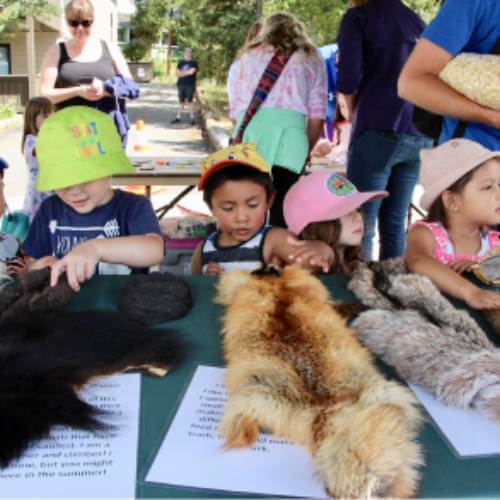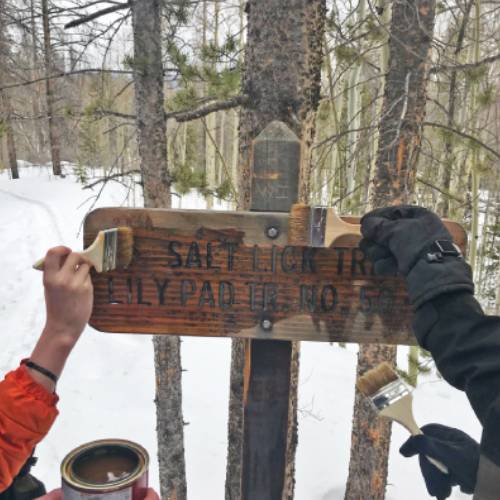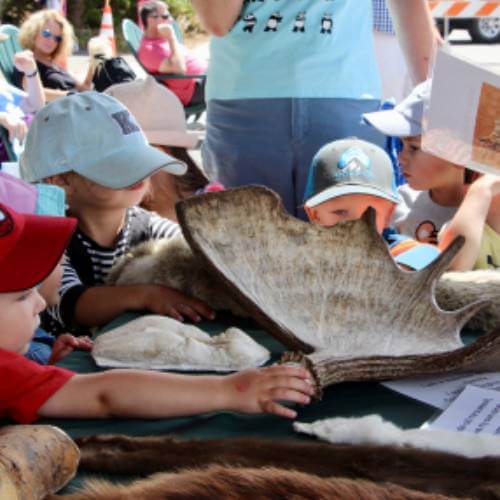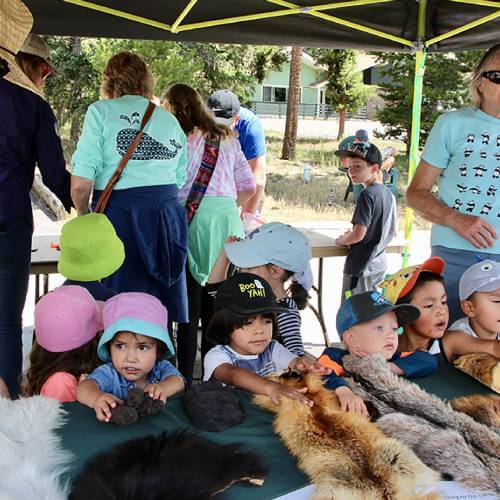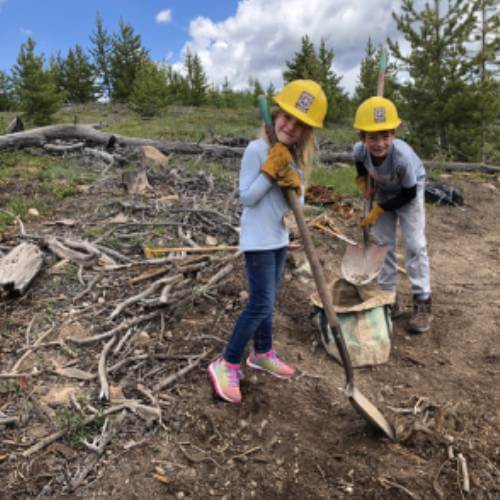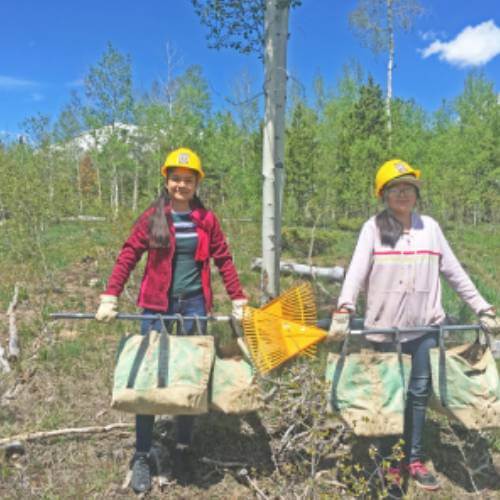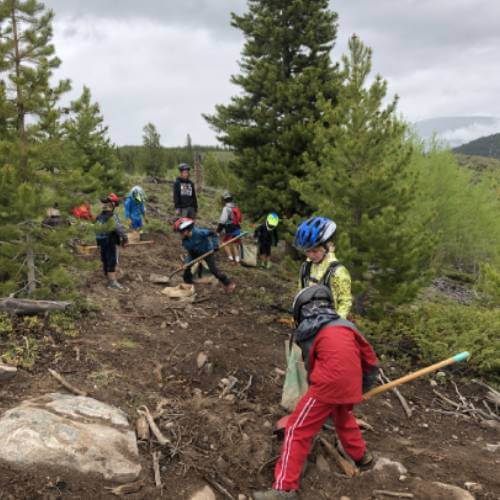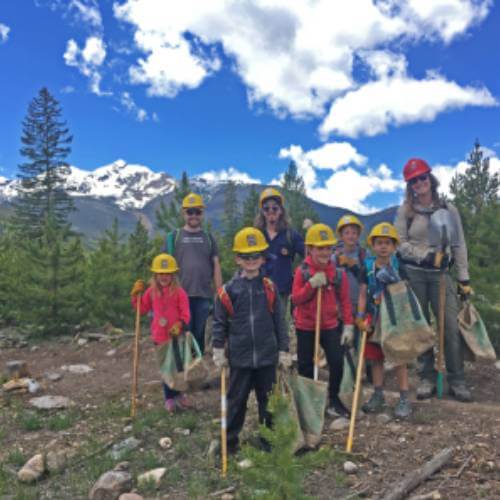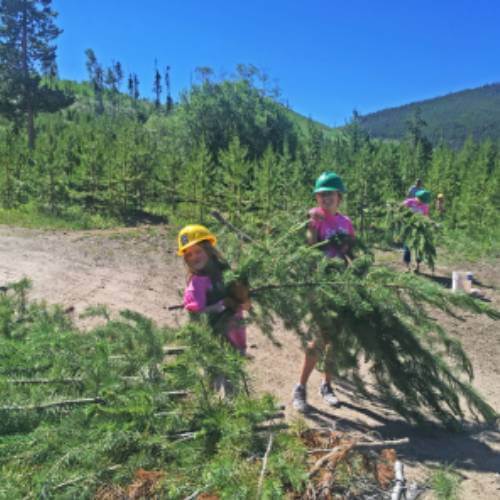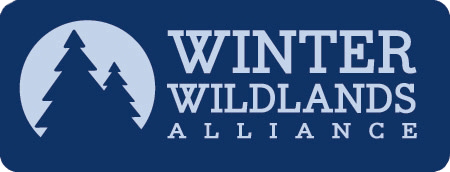Youth Programs
Your Donation to FDRD will make a difference!
FDRD offers both youth education programming and service projects on National Forest Land in Summit County. By combining hands-on environmental education with meaningful service work, FDRD aims to inspire future forest stewards.
We partner with both local and Front Range youth groups/organizations to provide these programs for free – if your youth group or organization is interested, please reach out to schedule a winter or summer program!
Scroll down to learn more about what we offer.
Youth Forest Stewards
Youth Programs Details
Macroinvertebrates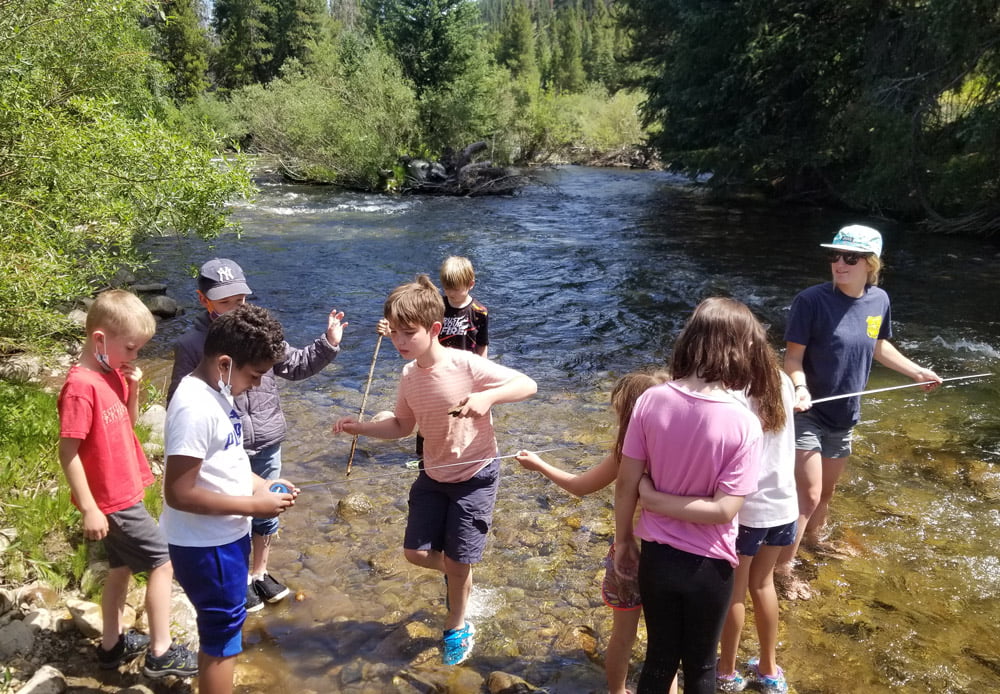
Time: 1-1.5 hours
Ages: 5-17
Activities: Get ready to splash around and learn more about the critters that live in our local waterways! These insects are called macroinvertebrates and they are great indicators of the health of our streams and rivers. Participants will gain hands-on experience as we explore how these fascinating little bugs can tell us a big story about water health. Participants will monitor for macroinvertebrates using multiple methods and learn more about this incredibly vital resource.
For Ages 5-8: We’ll get our feet wet looking for these little bugs and monitor how many there are and what types we have. We will also bug out with some insect-themed arts and crafts.
For Ages 8+: We will learn what macroinvertebrates are, and why they are important to determine water quality. After forming hypotheses regarding whether our water is clean or not, we will monitor macroinvertebrates, identify, and count them, calculate river CFS, and do an activity centered around our watershed and learn where exactly our water goes.
Location: Anywhere with river access. Works best with groups that can provide transportation to these areas.
Learning Outcomes: Participants will learn that some bugs are more pollution-tolerant than others. Participants will create their own hypotheses and answer the question: is our water clean or not? By finding, counting, and identifying bugs we will be able to determine if (in general) the river is polluted or not polluted. From there, we will make connections between water usage in the Western states to their own individual water usage to create awareness about the complexities of water rights in the West.
Forest Health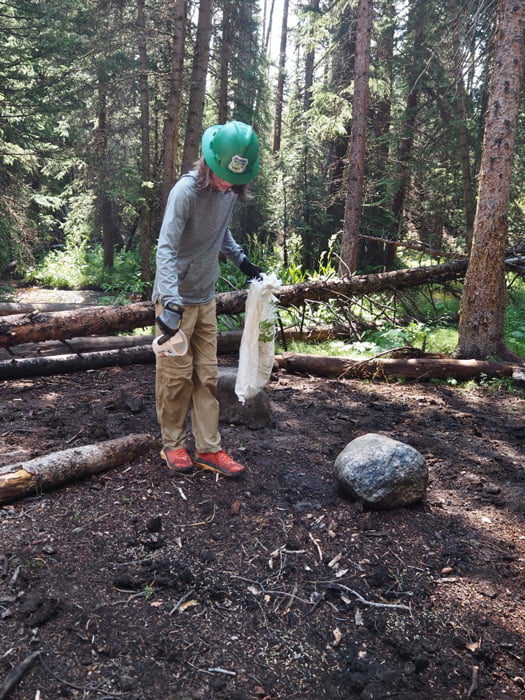
Time: 1-2 hours
Ages: 7+
Activities: Why are our forests so important to sustain local ecosystems as well as our community? The benefits that forests provide are endless. Our forests are in trouble, though. We will explore a few different forest health indicators with hands-on activities. These include identifying trees, sampling tree cores, as well as soil sampling.
Location: FDRD can run this program anywhere with National Forest access.
Learning Outcomes: We will explore what makes our forests thrive and what challenges face them. Forest health describes the resiliency, productivity, and sustainability of forest ecosystems. In addition, students will leave the program with a broader understanding of wildfires, ecosystem services, and the importance of sustaining biodiversity.
Leave No Trace
Time: drop in to 1-2 hours
Ages: 5+
Activities: How do we keep the places we love preserved when playing outside?? We Leave No Trace! We’ll go on a hiking adventure, play games, do arts and crafts while exploring how we can protect wild places.
Location: This program works best when on the trail but can also be adapted to work at a school/camp.
Learning Outcomes: Students will leave with a better understanding of how to recreate responsibly in our National Forest so that future generations can enjoy it.
Amazing Animal Adaptations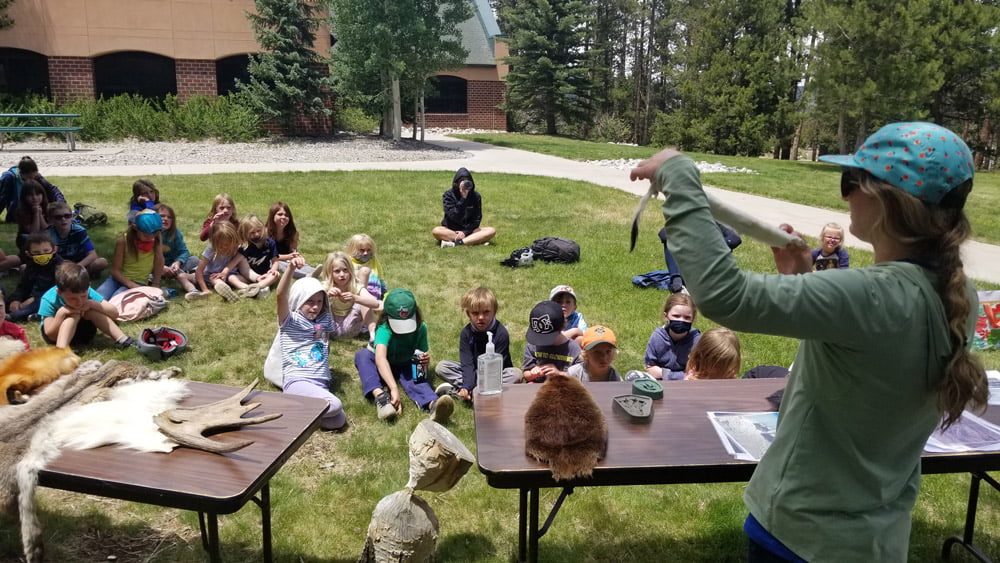
Time: drop in – 1 hour
Ages: 3+
Activities: FDRD educators will bring our collection of animal pelts, scats and tracks and explore how animals have specific adaptations to survive and thrive in the Colorado Rockies. We will play games and get moving as we learn about the local wildlife. We will also bring materials for arts and crafts.
Location: This program is easily adaptable to be taught anywhere. It is ideal to have an open area for activities. This program can also be adapted for events/drop-in programs.
Learning Outcomes: The goal of this program is to provide a sensory experience to learn more about our local wildlife. Participants will learn about the specific adaptations of local wildlife and, additionally, kids will make the connection between the adaptations that humans make living in the high country to the adaptations that animals make.
Service Projects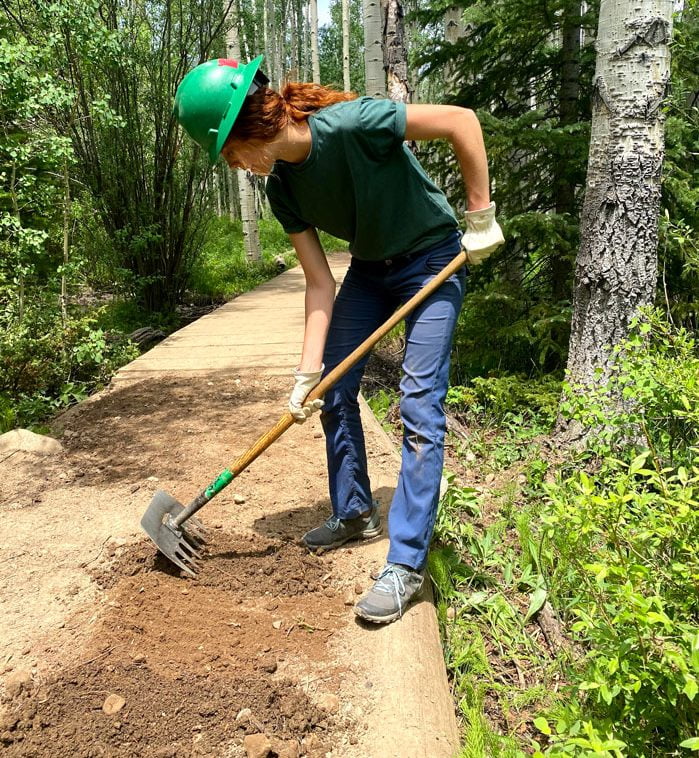
Time: 2 -4 hours
Ages: 10+ (may be able to accommodate younger groups)
Activities: Who doesn’t like playing in the dirt? Join FDRD and get the chance to work on our local trails! Service projects vary based on time of year, maintenance needs, and age of the group. Potential projects include:
- Restoring illegal campsites/social trails to conserve wildlife habitat and encourage native flora to grow back
- Thinning stands of young lodgepole pine trees to enhance forest health and improve line of sight on our trails for recreationists
- Improving trail tread to maintain sustainable trails that shed water efficiently
Location: Project locations vary and will be determined between FDRD staff and partner group needs.
Learning Outcomes: Youth participants will gain hands-on restoration skills, cultivate problem-solving skills and learn about forest stewardship by partaking in improving their National Forest.
Snow School (developed by Winter Wildlands Alliance)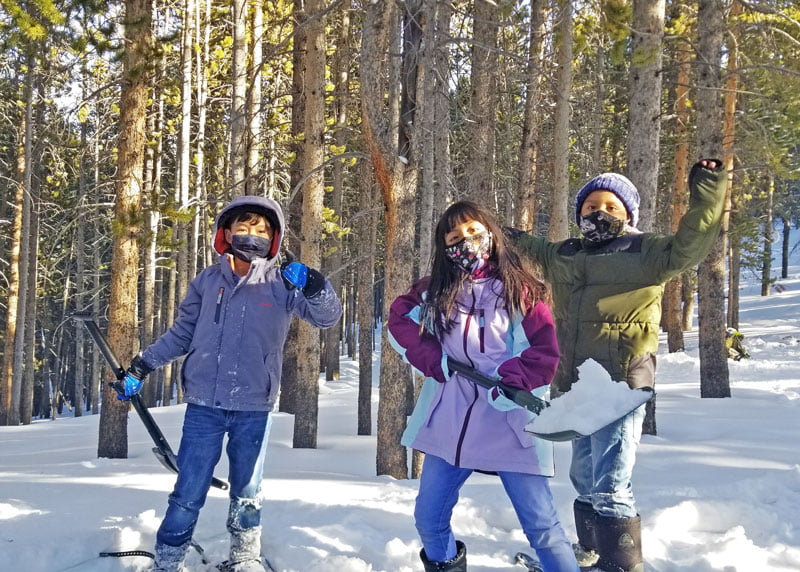
Time: 1-3 hours
Ages: 5-17
Activities: Activities vary for this program based on age of participants. Snow School can be as simple as going for a winter adventure and getting kids comfortable in snow shoes to learning about some of the basics of snow science. We will discover the wonders of the winter world through exploring concepts such as winter ecology, animal adaptations, winter survival skills, and snow science. We will get moving on snowshoes as well as play games and dig snow pits. Concepts to dive into can be determined by the needs of the group. FDRD has snowshoes for groups to use.
Location: This program works best at a winter access trailhead but can be adapted to work at a school/learning facility if there is access to snow.
Learning outcomes: Younger students will gain confidence in traveling in winter conditions and begin to identify winter specific animal adaptations and understand the basics of winter ecology and an awareness of the importance of snow for our watershed health. Older students will explore snow physics and metamorphism, avalanche awareness and the importance of snow as a water source.


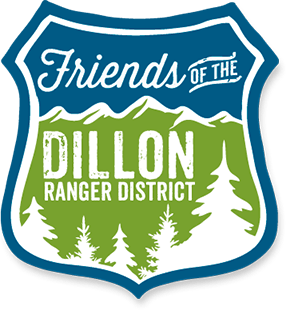
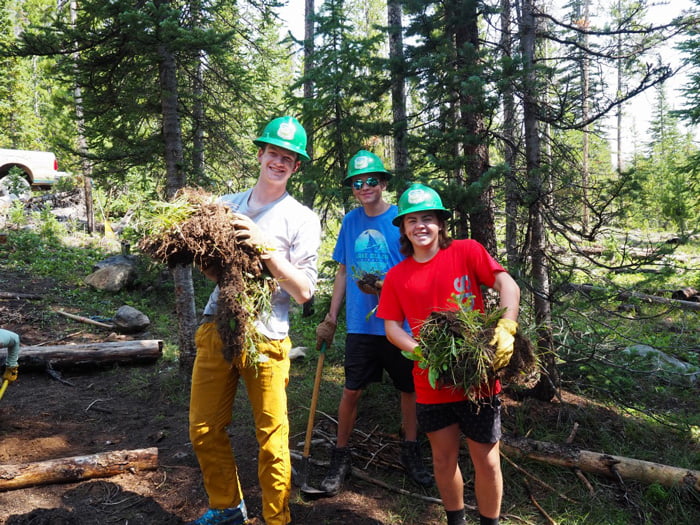 The Youth Forest Stewards (YFS) is a program that engages high school aged students (age 14-18) in natural resources and conservation based work outdoors. YFS students will participate in up to 6 forest stewardship volunteer projects between the summer months of May through September. Each project will differ and may include: new trail construction, tree thinning, fish surveys, wildlife habitat restoration, and much more! The culmination of the summer program will result in the students planning, promoting, and leading a volunteer project of their own in September. By joining the YFS crew, you will help build a community of like-minded students focused on bettering the White River National Forest.
The Youth Forest Stewards (YFS) is a program that engages high school aged students (age 14-18) in natural resources and conservation based work outdoors. YFS students will participate in up to 6 forest stewardship volunteer projects between the summer months of May through September. Each project will differ and may include: new trail construction, tree thinning, fish surveys, wildlife habitat restoration, and much more! The culmination of the summer program will result in the students planning, promoting, and leading a volunteer project of their own in September. By joining the YFS crew, you will help build a community of like-minded students focused on bettering the White River National Forest.